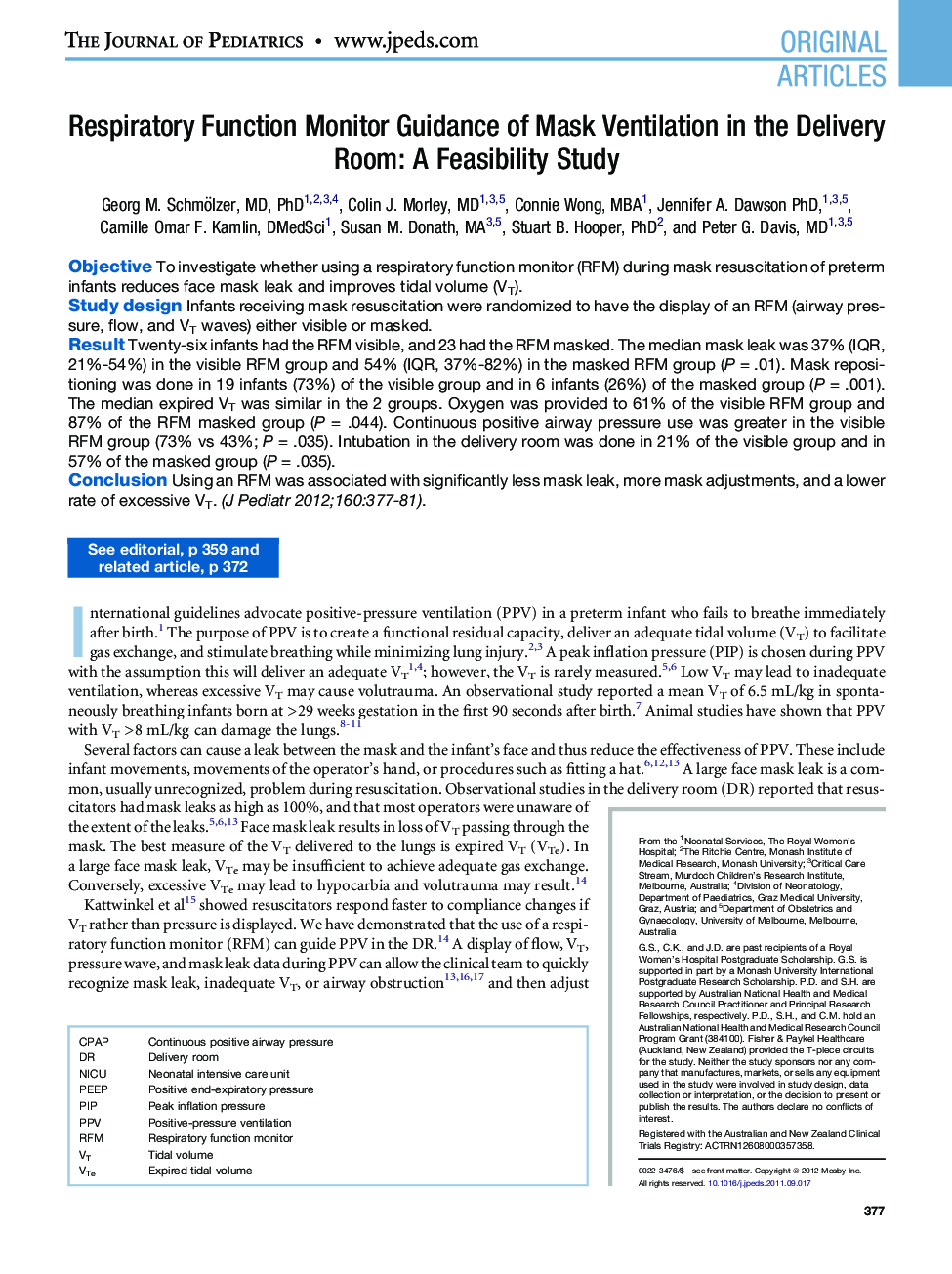| Article ID | Journal | Published Year | Pages | File Type |
|---|---|---|---|---|
| 6225265 | The Journal of Pediatrics | 2012 | 7 Pages |
ObjectiveTo investigate whether using a respiratory function monitor (RFM) during mask resuscitation of preterm infants reduces face mask leak and improves tidal volume (VT).Study designInfants receiving mask resuscitation were randomized to have the display of an RFM (airway pressure, flow, and VT waves) either visible or masked.ResultTwenty-six infants had the RFM visible, and 23 had the RFM masked. The median mask leak was 37% (IQR, 21%-54%) in the visible RFM group and 54% (IQR, 37%-82%) in the masked RFM group (P = .01). Mask repositioning was done in 19 infants (73%) of the visible group and in 6 infants (26%) of the masked group (P = .001). The median expired VT was similar in the 2 groups. Oxygen was provided to 61% of the visible RFM group and 87% of the RFM masked group (P = .044). Continuous positive airway pressure use was greater in the visible RFM group (73% vs 43%; P = .035). Intubation in the delivery room was done in 21% of the visible group and in 57% of the masked group (P = .035).ConclusionUsing an RFM was associated with significantly less mask leak, more mask adjustments, and a lower rate of excessive VT.
